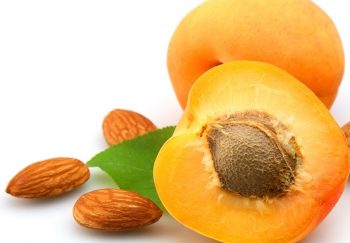Tempeh is a fermented soy product that’s a popular vegetarian meat replacement.
However, vegetarian or not, it can be a nutritious addition to your diet.
High
in protein, probiotics and a wide array of vitamins and minerals,
tempeh is a versatile ingredient that comes with a variety of health
benefits.
This article will take a deeper look at the many advantages of tempeh.
Tempeh is a traditional Indonesian food made from soybeans that have been fermented, or broken down by microorganisms.
Following fermentation, the soybeans are pressed into a compact cake that is commonly consumed as a vegetarian source of protein.
In addition to soybeans, tempeh may also be made from other bean varieties, wheat or a mixture of soybeans and wheat (1).
Tempeh
has a dry and firm but chewy texture and a slightly nutty taste. It can
be steamed, sautéed or baked and is often marinated to add more flavor.
Much
like other meatless sources of protein, such as tofu and seitan, tempeh
is a popular choice among vegans and vegetarians because it’s packed
with nutrients.
Summary: Tempeh is
typically made up of fermented soybeans and/or wheat. It can be prepared
in a variety of different ways and is high in nutrients, making it a
popular vegetarian source of protein.
Tempeh boasts an impressive nutrient profile. It is high in protein, vitamins and minerals but low in sodium and carbs.
A 3-ounce (84-gram) serving of tempeh contains these nutrients (2):
- Calories: 162
- Protein: 15 grams
- Carbs: 9 grams
- Total fat: 9 grams
- Sodium: 9 milligrams
- Iron: 12% of the RDI
- Calcium: 9% of the RDI
- Riboflavin: 18% of the RDI
- Niacin: 12% of the RDI
- Magnesium: 18% of the RDI
- Phosphorus: 21% of the RDI
- Manganese: 54% of the RDI
Because it is more compact than other soy products, tempeh provides more protein than some other vegetarian alternatives.
For example, 3 ounces (84 grams) of tofu contains 6 grams of protein, or about 40% of the protein in the same amount of tempeh (3).
Tempeh
is also a good dairy-free source of calcium. One cup (166 grams) of
tempeh contains about 2/3 of the calcium found in one cup of whole milk (2, 4).
Summary: Tempeh is a good source of protein, iron, manganese, phosphorus, magnesium and calcium. It is also low in carbs and sodium.
Fermentation is a process that involves the breaking down of sugars by bacteria and yeast (5).
Through fermentation, the phytic acid found in soybeans is broken down, helping to improve digestion and absorption (6).
Additionally, fermented foods are a good source of probiotics, which are beneficial bacteria found in your gut that can help promote digestive health (7).
Compared to other tempeh varieties, soy-based tempeh is especially rich in probiotics.
A 2013 test-tube study found that soy tempeh was more effective than bean-based tempeh in stimulating the growth of Bifidobacterium, a beneficial strain of bacteria (8).
Studies have found that probiotics could alleviate the symptoms of irritable bowel syndrome, prevent diarrhea, reduce bloating and support regularity (9, 10, 11).
Some studies have even found that probiotics could increase weight loss.
One
study supplemented 210 adults who had large amounts of belly fat with
probiotics. Following the 12-week study, participants lost an average of
8.5% of their belly fat (12).
Probiotics have also been associated with improvements in immunity, mental health and even blood cholesterol levels (13, 14, 15).
Summary:
Tempeh contains probiotics, which may help promote digestive health,
increase weight loss and improve immune function, mental health and
blood cholesterol levels.
Tempeh is high in protein. One cup (166 grams) provides 31 grams of protein (2).
Some studies suggest that a protein-rich diet may stimulate thermogenesis, leading to an increase in metabolism and helping your body burn more calories after each meal (16).
A diet high in protein can also aid in appetite control by increasing fullness and decreasing hunger (17).
One study found that high-protein soy snacks improved appetite, satiety and diet quality compared to high-fat snacks (18).
Additionally, research shows that soy protein can be just as effective as meat-based protein when it comes to appetite control.
In a 2014 study, 20 obese men were placed on a high-protein diet that included either soy-based or meat-based protein.
After
two weeks, they found that both diets led to weight loss, a decrease in
hunger and an increase in fullness with no significant difference
between the two protein sources (19).
Summary: Tempeh is high in soy protein, which can promote satiety, reduce hunger and increase weight loss.
Tempeh is traditionally made from soybeans, which contain natural plant compounds called isoflavones.
Soy isoflavones have been associated with reduced cholesterol levels.
One
review looked at 11 studies and found that soy isoflavones were able to
significantly decrease both total and LDL cholesterol (20).
Another study looked at the effects of soy protein on cholesterol levels and triglycerides. 42 participants were fed a diet containing either soy protein or animal protein over a six-week period.
Compared
to animal protein, soy protein decreased LDL cholesterol by 5.7% and
total cholesterol by 4.4%. It also decreased triglycerides by 13.3% (21).
Though
most available research focuses on the effects of soy isoflavones and
soy protein on blood cholesterol, one study did focus specifically on
tempeh.
A 2013 animal study examined the effects of nutrient-enriched soybean tempeh on mice with liver damage.
It
found that tempeh had a protective effect on the liver and was able to
reverse damage to liver cells. Additionally, tempeh caused a decrease in
both cholesterol and triglyceride levels (22).
Summary:
Tempeh is made from soybeans, which contain soy isoflavones. Studies
show that soy isoflavones and soy protein may decrease blood cholesterol
levels.
Studies show that soy isoflavones also possess antioxidant properties and may reduce oxidative stress (23).
Antioxidants
work by neutralizing free radicals, atoms that are highly unstable and
can contribute to the development of chronic disease.
The accumulation of harmful free radicals has been linked to many diseases, including diabetes, heart disease and cancer (24).
Numerous
studies have shown that isoflavones could reduce markers of oxidative
stress by increasing antioxidant activity in the body (25, 26).
Other
studies have found that supplementing with soy isoflavones may have a
favorable effect on several diseases associated with oxidative stress.
For example, one animal study showed that soybean isoflavones decreased blood sugar levels in rats with diabetes (27).
Another
study used data from 6,000 households in Japan and found that intake of
soy products was associated with a decreased risk of death from heart
disease and stomach cancer (28).
Tempeh may especially be beneficial compared to other soy products.
One
study compared the isoflavones in soybeans to the isoflavones in tempeh
and found that tempeh had greater antioxidant activity (29).
Summary: Soy isoflavones may possess antioxidant properties and could be beneficial in decreasing oxidative stress and chronic disease.
Tempeh is a good source of calcium, a mineral that is responsible for keeping bones strong and dense.
Adequate
calcium intake may prevent the development of osteoporosis, a condition
that is associated with bone loss and porous bones (30).
In one study, 40 elderly women increased their calcium
intake through diet or supplements for two years. Increasing calcium
intake decreased bone loss and preserved bone density, compared to
control groups (31).
Another
study looked at 37 women and showed that increasing dietary calcium
intake by 610 mg per day helped prevent age-related bone loss (32).
Other studies show that increasing calcium intake could help increase bone growth and density in children and teenagers (33, 34).
Though
dairy products are the most common sources of calcium, studies show
that the calcium in tempeh is as well absorbed as the calcium in milk,
making it an excellent option for increasing calcium intake (35).
Summary: Tempeh is high in calcium and may help increase bone density and prevent bone loss.
Tempeh, along with other fermented soy products, is generally considered to be safe for most people.
However, some individuals may want to consider limiting their intake of tempeh.
Those with a soy allergy should avoid tempeh altogether.
Eating
tempeh may trigger an allergic response for those allergic to soy,
which could include symptoms like hives, swelling or difficulty
breathing.
Additionally, soybeans are considered a goitrogen, a substance that can interfere with thyroid function.
Though
studies show that soy intake has little to no effect on thyroid
function, those with impaired thyroid function may want to keep intake
in moderation (36).
Summary:
Individuals who have a soy allergy should avoid tempeh, while those
with impaired thyroid function may want to limit their intake.
Both versatile and nutritious, tempeh is easy to incorporate into your diet.
Tempeh is typically marinated or seasoned to increase flavor, then crumbled, baked, steamed or sautéed and added to dishes.
It can be used in everything from sandwiches to stir-fries.
Here are a few other delicious ways to use tempeh:
Summary:
Tempeh is usually marinated or seasoned and then crumbled, baked,
steamed or sautéed. It can be used in a wide variety of dishes.
Tempeh is a nutrient-dense soy product with a high amount of protein, as well as various vitamins and minerals.
It may decrease cholesterol levels, oxidative stress and appetite while improving bone health.
Tempeh also contains probiotics, which can improve digestive health and promote weight loss.
Nevertheless,
those with a soy allergy or impaired thyroid function should limit
their intake of tempeh and other soy-based products.
Yet for most, tempeh is a versatile and nutritious food that can be an excellent addition to the diet.




